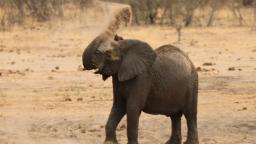Zimbabwe suspects bacterial disease behind elephant deaths


The elephant deaths, which began in late August, come soon after hundreds of elephants died in neighboring Botswana in mysterious circumstances.
Officials in Botswana were initially at a loss to explain the elephant deaths there but have since blamed toxins produced by another type of bacterium.
Experts say Botswana and Zimbabwe could be home to roughly half of the continent’s 400,000 elephants, often targeted by poachers.
Elephants in Botswana and parts of Zimbabwe are at historically high levels, but elsewhere on the continent — especially in forested areas — many populations are severely depleted, said Chris Thouless, head of research at Save the Elephants.
“Higher populations equal greater risk from infectious diseases,” Thouless told Reuters, adding that climate change could put pressure on elephant populations as water supplies diminish and temperatures rise, potentially increasing the probability of pathogen outbreaks.
Zimbabwe Parks and Wildlife Management Authority Director-General Fulton Mangwanya told a parliamentary committee on Monday that so far 34 dead elephants had been counted.
“It is unlikely that this disease alone will have any serious overall impact on the survival of the elephant population,” he said. “The northwest regions of Zimbabwe have an over-abundance of elephants and this outbreak of disease is probably a manifestation of that … particularly in the hot, dry season elephants are stressed by competition for water and food resources.”
Postmortems on some of the dead elephants showed inflamed livers and other organs, Mangwanya said. The elephants were found lying on their stomachs, suggesting a sudden death.
Vernon Booth, a Zimbabwe-based wildlife management consultant, told Reuters it was difficult to put a number on Zimbabwe’s current elephant population. He estimated it could be close to 90,000, up from 82,000 in 2014 when the last national survey was conducted, assuming that roughly 2,000-3,000 have died each year from all causes.








